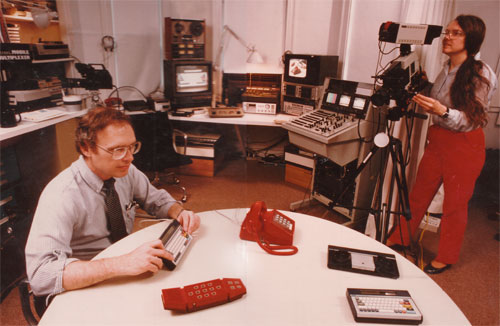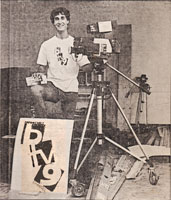|
Brown Television (BTV)
BTV was the largest single undergraduate organization at Brown University during the late 1980's, with over 300 members. Though inactive for some years and reduced to a channel on Brown's IPTV network, students are trying to revitalize BTV in conjunction with the Brown Film Society.
BTV was founded by Doug Liman and Dave_Bartis, both of whom went on to prominent careers in Hollywood and Broadcast Television.
Virtually every Brown University building, and especially the dorm rooms, had been wired with a coaxial cable that was intended to connect data terminals to a massive mainframe computer donated by prominent Brown alumnus and IBM chief executive Thomas Watson, Jr..
Liman and Bartis wondered what would happen if they attached a channel 9 television modulator to the head end of the cable that once connected to the IBM Mainframe. The answer was a cable television signal that was tunable from all the dorms. Thus BTV Channel 9 was born.
 Bob Doyle (Brown '58) had built a small studio with three Sony color cameras and a sophisticated Shintron switcher in the lab at DTV Group. Bob was trying to replicate in video the multi-track editing he had pioneered with Super-8 film at Super8 Sound. In 1986 he offered the equipment to BTV to get their studio started in Faunce House.
Bob Doyle (Brown '58) had built a small studio with three Sony color cameras and a sophisticated Shintron switcher in the lab at DTV Group. Bob was trying to replicate in video the multi-track editing he had pioneered with Super-8 film at Super8 Sound. In 1986 he offered the equipment to BTV to get their studio started in Faunce House.
 Bartis and Liman started with this equipment and in the following year Brown received a $250,000 grant to build out the Faunce House cable television studio.
BTV members were active in the National Association of College Broadcasters (NACB), a trade association for student radio and TV stations that was based at Brown University. NACB published the monthly College Broadcaster magazine. It also ran U Network, a non-commercial, non-profit network distributing collegiate programming throughout the world. In its heyday NACB was run by a small three person staff, several interns, and many volunteers. NACB sponsored conferences geared toward college radio and television, and operated an Internet listserver. Today most college video and audio programming is distributed via the web. See College Broadcasters.
Brown students have occasionally tried to reactivate BTV, but in the age of highly portable camcorders suitable for on-location production, inexpensive video editing solutions like Apple Final Cut Pro, and web video distribution like YouTube and UStream, there is less demand for professional multi-camera studios, which are more suited to live broadcasting.
Bartis and Liman started with this equipment and in the following year Brown received a $250,000 grant to build out the Faunce House cable television studio.
BTV members were active in the National Association of College Broadcasters (NACB), a trade association for student radio and TV stations that was based at Brown University. NACB published the monthly College Broadcaster magazine. It also ran U Network, a non-commercial, non-profit network distributing collegiate programming throughout the world. In its heyday NACB was run by a small three person staff, several interns, and many volunteers. NACB sponsored conferences geared toward college radio and television, and operated an Internet listserver. Today most college video and audio programming is distributed via the web. See College Broadcasters.
Brown students have occasionally tried to reactivate BTV, but in the age of highly portable camcorders suitable for on-location production, inexpensive video editing solutions like Apple Final Cut Pro, and web video distribution like YouTube and UStream, there is less demand for professional multi-camera studios, which are more suited to live broadcasting.
|
|
|